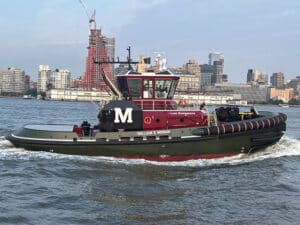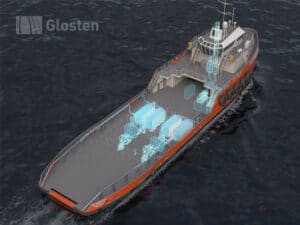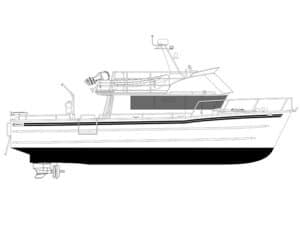
Op-Ed: Smarter ship design starts with data
Written by
Jonathan Strachan
By Jonathan Strachan – CTO, Houlder
Today volatile markets, rising costs, and shifting environmental legislation all contribute to a high-stakes operating environment in the maritime industry. Traditionally, shipowners and operators have relied heavily on experience and gut instinct to guide decisions when it comes to ship design. While intuition had its place—successful and effective ship designs would simply be reused—faced with today’s complex choices on vessel design and the adoption and retrofitting of clean technology and energy saving devices, there is no substitute for the clarity that comes from rigorous data analysis.
In a sector where margins are thin and the cost of error is high, relying on what “feels right” isn’t enough. Today’s challenges require evidence-based decision-making that blends data, engineering insight and robust analysis to optimize decision making and outcomes. When it comes to improving operational parameters, selecting between newbuilds and retrofits, or deploying clean technology, data-backed choices lead to safer, more sustainable and commercially viable outcomes.
The key is asking the right questions early, before design work begins or specifications are finalized. This ensures the right data sources and modelling techniques are utilized. Effective preparation prevents false assumptions and helps identify solutions that might not be immediately obvious.
With the right tools, sensors, modelling software and data expertise, owners can make better-informed decisions about efficiency and optimization throughout a vessel’s life cycle. From validating early-stage ship design decisions to understanding operational trade-offs, a data-driven approach builds resilience into ship design and operation.
A common pitfall is assuming that what worked for one ship will work equally well for another. Houlder recently worked with a client who wanted to replicate a successful retrofit from one vessel to its sister ship. At first glance, the project looked like a copy-paste exercise. But detailed analysis, including operational data pulled from AIS, revealed a key difference—the sister vessel ran at significantly slower speeds and at a lighter draft.
Further modelling in those operating conditions showed that while the proposed modification would still yield savings, they would be less substantial than for the original ship and have a longer payback period. Without first asking the right questions and going on to interrogate the data, this key insight would have been missed and a significant investment would have underperformed.
WAPS—the value of clean tech
Wind-assisted propulsion systems (WAPS), from rotor sails to suction or soft sails, are gaining momentum to cut fuel use and emissions. But without analysis, installing these technologies can backfire, leading to disappointing performance or even increased costs.
Houlder has been working with shipowners and technology developers to help realize the full potential of WAPS. In a recent project, Houlder designed and managed a sea trial program, installing bespoke instrumentation to track both vessel and sail performance. During the trials, real-time analysis allowed adjustments and immediate validation of modelling predictions. The result was a robust sea trial report and confidence that the system would deliver measurable efficiency gains.
Slow steaming is more than just speed reduction
Slow steaming is often adopted to reduce emissions and fuel use, but the reality is more nuanced. Its downsides can include a need for more vessels and larger fleets, it can strain engines and impact revenue. Houlder recently helped a client navigate this complexity by analyzing AIS and fuel consumption data from a vessel operating under EEXI requirements.
The vessel was equipped with controllable pitch propellers and a shaft generator, which fixed the shaft’s RPM to correspond with the frequency requirements of the onboard electrical network. This arrangement prevented the propeller from operating at optimal pitch, reducing the overall propulsive efficiency. An analysis of vessels AIS data showed that switching off the shaft generator and running a separate genset would allow the shaft RPM to be matched to the propeller’s optimum pitch. This improved propulsion efficiency enough to offset the fuel used by running the additional genset. Again, the solution was revealed through detailed evidence-based analysis.
Making data work for shipowners
Whether considering retrofits, operational changes or new technology, owners should avoid guesswork. Clean technologies have great potential, but their success depends on how well they’re integrated and how closely their performance is matched to real-world operating conditions.
By combining data science with marine engineering, shipowners can more accurately understand and predict the impact of design or operational changes. That means being able to test scenarios, model outcomes and evaluate trade-offs, not just in theory but using data grounded in actual vessel behavior.
Advances in processing power and modelling tools now make it possible to apply this approach at scale. What once required months of work can now be turned around in days, helping owners adapt more quickly and with greater confidence.
Shipping will always involve uncertainty, but owners who shift from instinct-led to insight-led decision-making will be better equipped to tackle complexity, avoid unintended consequences and make smarter investments, turning risk into opportunity.




